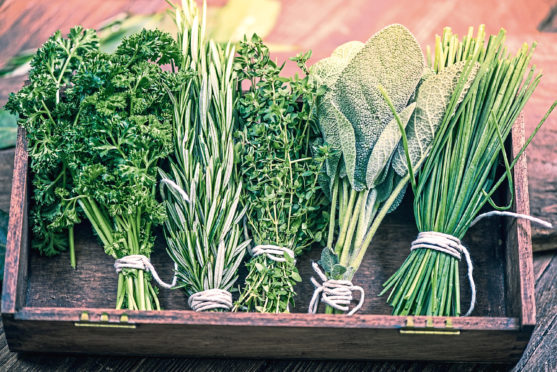
Thyme, sage and oregano are some of the tastiest herbs and, along with many others, including rosemary and marjoram, they like free-draining soil and as much sun as they can get in order to produce their pungent flavours.
One of the easiest ways to grow them is in a rockery, where the stony conditions suits them down to the ground and there’s less danger of them becoming waterlogged during the winter months. But you don’t need to create a rockery if you don’t have one, pots filled with gritty soil will do just as well.
Most herbs don’t need much care, but if they do begin to look a little tired then liquid feed, diluted to half-strength, and applied just once or twice, will usually be enough to revive them. Picking regularly will help to keep them in shape, but if they do grow too big, then cutting them back works just as well and you can freeze or dry any extra leaves so that you will have a handy supply, even during the winter months.
Also growing well just now are raspberries and other cane fruits. Scotland has an ideal climate for berries, so it would be a pity not to find space in the garden to grow some. Summer-fruiting raspberries, which are ripe for picking now, are grown on canes that have grown the previous year and, after harvesting, these should be cut back along with some new growth, to leave just six or eight fresh canes, which will produce next year’s crop.
Autumn raspberries produce their fruit on canes that have grown the same year and all growth on these should be cut back in February to allow new canes to develop.
If you’ve got the room, then growing both kinds will give you a long season of delicious, fresh berries, all for very little effort. Grow them somewhere sunny in reasonable soil that’s been fortified with well-rotted manure and, apart from a little pruning and tying in the new canes on the summer-fruiting varieties, then weeding, watering during dry spells and giving the occasional liquid feed is all it takes although it’s a good idea to protect the fruit with netting from several weeks before the fruit matures in order to prevent the birds from getting to the berries before you do.

Enjoy the convenience of having The Sunday Post delivered as a digital ePaper straight to your smartphone, tablet or computer.
Subscribe for only £5.49 a month and enjoy all the benefits of the printed paper as a digital replica.
Subscribe